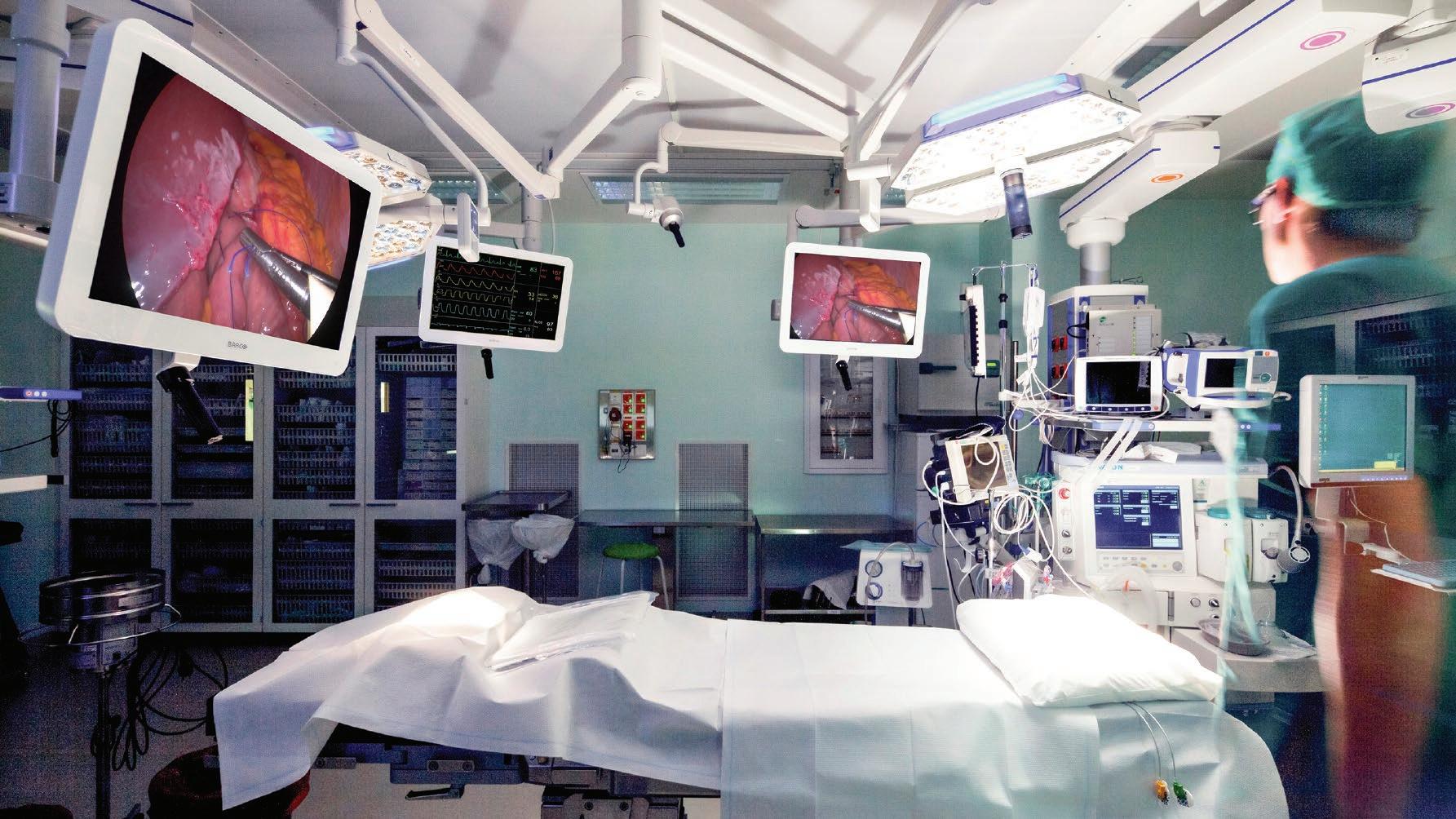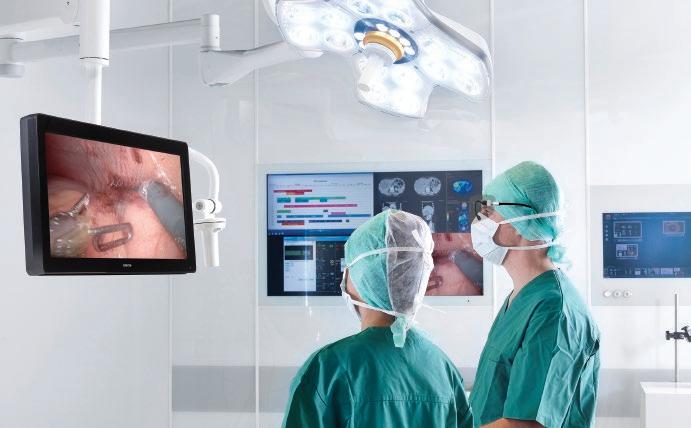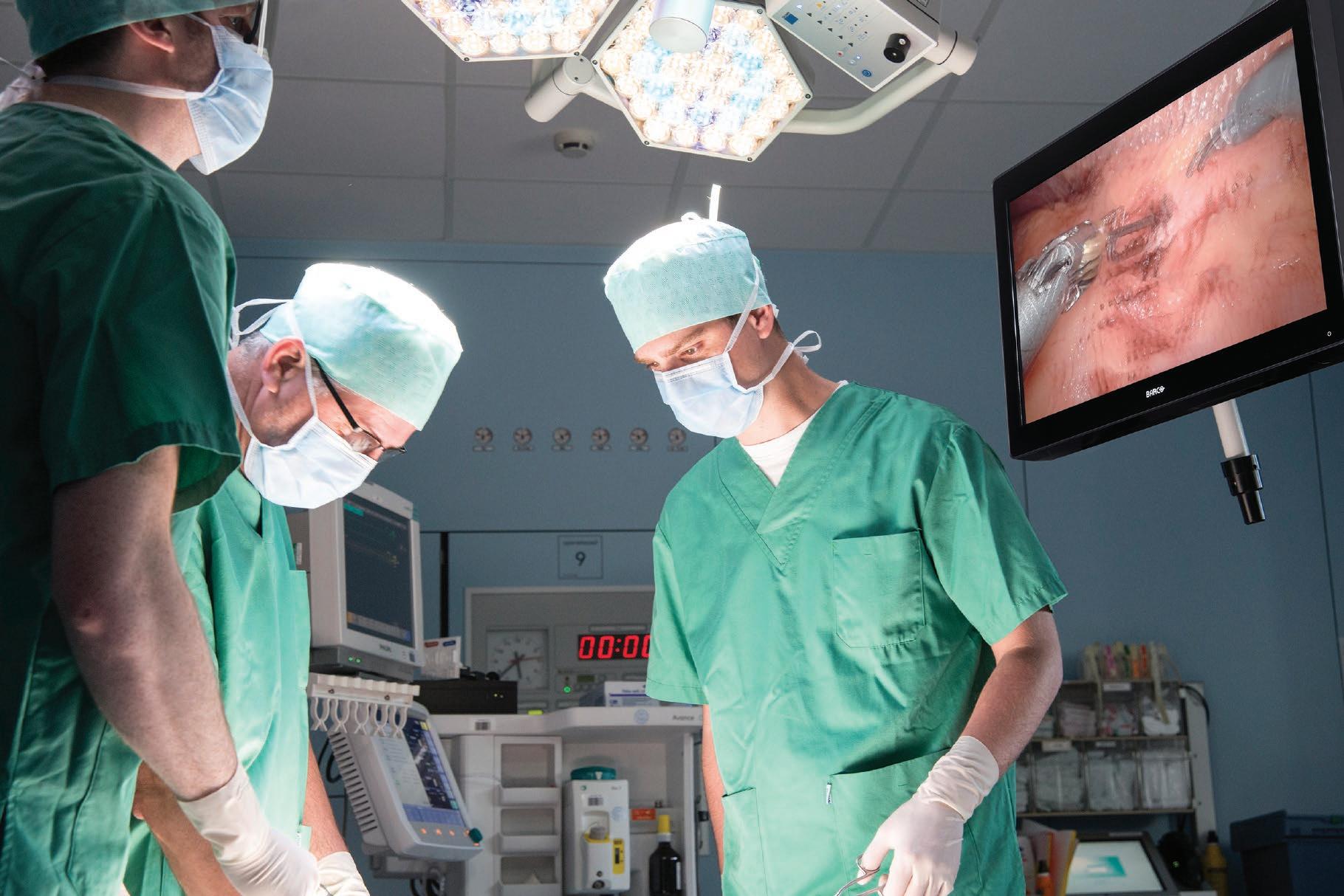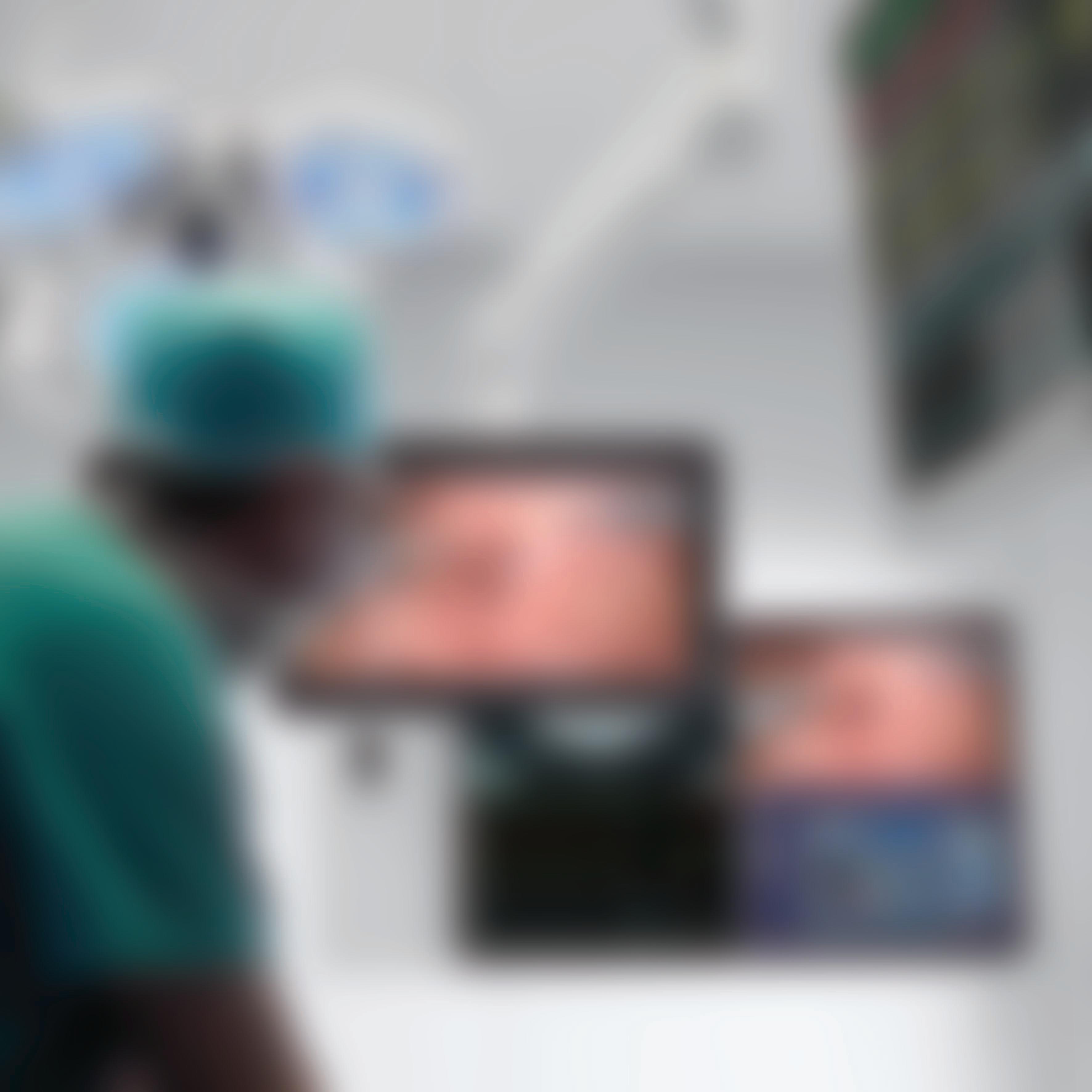IMPROVING OPERATING ROOM EFFICIENCY AND THE ROLE OF DIGITAL TECHNOLOGY
Interdependence Helped by Integration Peter Dunwell, Medical Correspondent For successful surgery outcomes, people and technology have to work together and the technology needs to make the work more effective
Imaging is an important part of the assessment which the surgeon will use during the procedure
12 | WWW.HOSPITALREPORTS.EU
In the two preceding articles, we have looked at some of the technology aspects of surgery and work in the operating theatre. But machines, even robots and guidance systems, are no more than tools. At the heart of any surgical procedure are people: the patient on whom the operation is being performed and the team who are carrying out the surgery. The comfort of the team, especially of the surgeon, will impact the way they work.
Human Factors in Surgery As in any aspect of healthcare, in the operating theatre, patient safety is the foremost consideration and it is also a key driver of processes. As BMC explains in ‘Patient safety in surgery’ 16, “The surgical environment must be considered as HRO [High Reliability Organisation], therefore, it demands a high level of standardization and safety processes in place with redundant system to decrease errors and human mistakes.” For surgery, part of that safety consideration is addressed in the pre-operative assessment during which is, as ‘Teach Me Surgery’17 explains, “… an opportunity to identify co-morbidities that may lead to patient complications during the anaesthetic, surgical, or post-operative period.” continuing to add that imaging is an important part of the assessment which the surgeon will use during the procedure. Given the complexity of almost any surgery, it will come as no surprise that stress is a factor affecting performance and outcomes. The American Journal of Surgery18 confirms, “Surgical adverse events persist despite several decades of system-based quality improvement efforts, suggesting the need for alternative strategies. Qualitative studies suggest stress-induced negative intraoperative interpersonal dynamics might contribute to performance errors and undesirable patient outcomes. Understanding the impact of intraoperative stressors may be critical to reducing adverse events and improving outcomes.” The causes of such stress will vary
and are often the same as in any workplace as Europe PMC suggests in ‘Conflicts in operating room: Focus on causes and resolution’19, “The operation theater (OT) environment is the most complex and volatile workplace where two coequal physicians share responsibility of one patient. Difference in information, opinion, values, experience and interests between a surgeon and anesthesiologist may arise while working in high-pressure environments like OT, which may trigger conflict.” Stress in the operating theatre can also derive from factors specific to the equipment. We have mentioned in previous articles the problem of surgeons having to look up from their hands and the operation site in order to view instruments or images, and that can be both physically and mentally stressful. Other human factors would include eye strain and eye fatigue which can often be caused by light quality; as obp20 points out, “One of the most notable effects of poor illumination on surgeons is eye strain and fatigue. Too much lighting is likely to fatigue the surgeon’s eyes and cause glare. Such adverse effects on the visual performance of the surgeon could lead to incorrect assessments and errors. Proper surgical lighting should provide the right amount of illumination and the correct patch size for surgery.” But it isn’t only lighting that can lead to eye strain for surgeons. NVision21 highlights a problem that is very much of our age, “Computer vision syndrome (CVS) is a condition caused by using digital displays – including computer monitors, laptops, tablets, e-readers, and smartphones – for too long without a break, without blinking enough, at an improper distance, or before sleep. Symptoms include dry eyes and headaches, along with other kinds of strain that lead to overall fatigue.” That is something with which every reader will be familiar but add to that the pressure of performing a complex and intricate procedure on the success of which a patient’s welfare depends and you can see how anything that can reduce the strain will be a very positive contribution to good outcomes.






